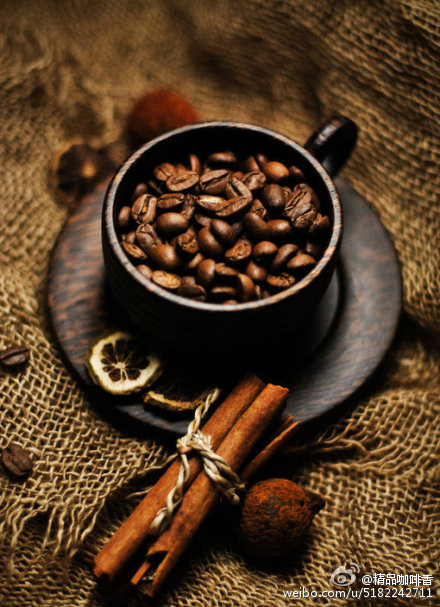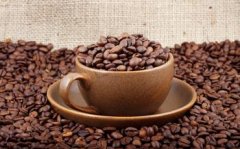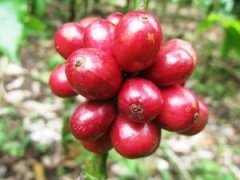World Coffee producing countries introduce South American producing countries

1. Brazil Brazil
Brazil is the number one coffee producer and marketer in the world. The annual output of coffee beans exceeds 30 million bags (60 kilograms each). Coffee experts do not think highly of their beans, saying that they are too monotonous, bitter, sour and fragrant enough, and are not even included in the list of producing areas of fine coffee. Because most of the Brazilian coffee gardens are less than 1200 meters above sea level, there are no big trees to shade, and the way of picking beans is rough, and the raw and ripe fruits are picked together, which does not meet the conditions of fine coffee.
The Brazilian Fine Coffee Association sets the tone for Brazilian beans by the term "Strictly Soft", which means "extremely mild and smooth" to replace the bad evaluation of "dull, no personality". The association's definition of "extremely warm and smooth" is: "the entrance is sweet and pure, and there is no thankless acerbity in the aftertaste. It does not feel as thin as water, and it is quite thick."
2. Colombia Colombia
In 1808, coffee was first introduced to Colombia (Colombia), which is the world's largest producer of high-quality Arabian washed coffee, with an annual output of 13 million bags. Colombia's interest in the development of products and the promotion of production, coupled with its superior geographical and climatic conditions, make Colombian coffee good in quality and delicious and famous all over the world. It is characterized by full particles, rich nutrition, rich aroma and moderate acidity.
3. Ecuador Ecuador
Ecuador is the highest Arabian coffee plantation in the world. The Arabian Coffee Tree was first introduced to Ecuador in 1952 and its coffee is of good quality, especially the coffee harvested in early June. Ecuadorian coffee beans can be divided into two varieties: Galapagos and Gigante, both of which have the characteristics of large particles, heavy weight, balanced acidity and rich aroma. Ecuadorian coffee can be divided into first class (No.1) and super excellent (ExtraSuperior) according to its quality. They are mainly exported to the Nordic countries of Scandinavia. Can be made into high-quality mixed coffee, suitable for a variety of uses.
4. Peru Peru
Coffee is high-quality and balanced and can be used for mixed drinks. Up to 98% of Peruvian coffee is grown in forest areas, and most producers are small farmers. Peru's finest coffee is produced in Chanchmayo, Cuzco, Norte and Puno. Most Peruvian coffee is grown under natural conditions. The quality of Peruvian coffee is comparable to that of any kind of coffee in Central or South America. The high quality coffee produced by Peru is shipped to Germany for blending and then to Japan and the United States, which also illustrates its high standard of quality.
95% of Peruvian coffee is exported. Peru has a total of 70 coffee exporters, of which 20 are large, accounting for 90% of the country's total exports. 99% of Peru's coffee exports are green beans, of which 50% are exported to Europe and 45% to the United States.
Important Notice :
前街咖啡 FrontStreet Coffee has moved to new addredd:
FrontStreet Coffee Address: 315,Donghua East Road,GuangZhou
Tel:020 38364473
- Prev

How to identify good coffee beans and select coffee beans
No matter what kind of coffee beans, freshness is an important factor affecting the quality. When shopping, grab one or two coffee beans and chew them in your mouth. If the coffee beans are crisp and sound, and the tooth pods stay fragrant is the top grade, but it is best to squeeze them with your hands to feel whether they are solid, rather than buying empty-shell coffee. If the coffee bean has lost its fragrance or smells stale, it means
- Next

World coffee producing countries introduce African producing countries
African producing countries 1. Ethiopia Ethiopia Ethiopian coffee is neither strong nor irritating. It is produced in Harald (Harrar), Yega Xuefei (Yirgacheffe), Sidamo (Sidamo), Limu (Limu), Djimmah (Djimmah), Lekempti (Kepa), Kapa and other places. Among them, Harald coffee is the substitute of Ethiopian coffee.
Related
- Beginners will see the "Coffee pull flower" guide!
- What is the difference between ice blog purified milk and ordinary milk coffee?
- Why is the Philippines the largest producer of crops in Liberia?
- For coffee extraction, should the fine powder be retained?
- How does extracted espresso fill pressed powder? How much strength does it take to press the powder?
- How to make jasmine cold extract coffee? Is the jasmine + latte good?
- Will this little toy really make the coffee taste better? How does Lily Drip affect coffee extraction?
- Will the action of slapping the filter cup also affect coffee extraction?
- What's the difference between powder-to-water ratio and powder-to-liquid ratio?
- What is the Ethiopian local species? What does it have to do with Heirloom native species?

